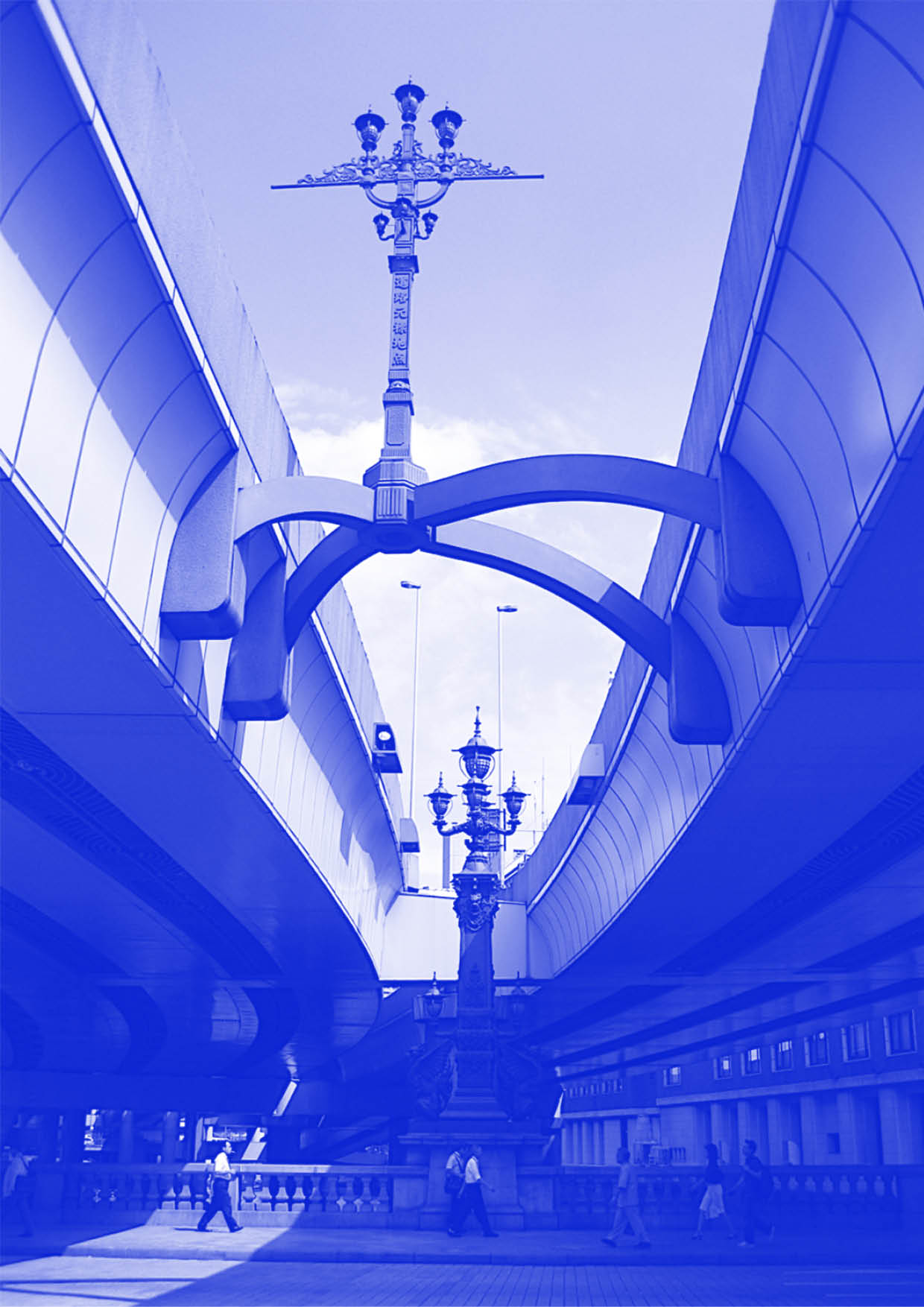
Dorogenpyo
Concrete object, Light, Object, Nihonbashi, Tokyo, Infrastructure, Image
In the middle of the Shuto expressway, just above the Nihonbashi Bridge there is a structure holding a single old street lamp. Shortly before the 1964 Olympics an express way was built over the Nihonbashi Bridge obscuring the classic view of mount Fuji from it. Large highway and expressway projects were constructed after the WWII and one of the projects was the Shuto Expressway being built to literally run above the famous bridge. The Dorogenpyo (Point Zero), which is the starting point of Japan’s five major highways, is signed by is a marker at Nihonbashi bridge. In 1605, the first official map of Japan was ordering that distances should be measured from Nihonbashi. Distances throughout the country were measured from the bridge, effectively becoming the nation’s cartological zero point. Much like the expressway above the current bridge, Nihonbashi Bridge was an expression of the wealth and authority of the shogunate’s new capital, Edo. The twin arch bridge that is currently standing was built in 1911, made of stone and replaced the original wooden one that stood there for hundreds of years. The Nihonbashi Bridge has been, now, designated as an Important Cultural Property.
We could state that the street lamp, along with the marker, which is located exactly beneath the Dorogenpyo, signs the beginning of all the ancient routes. Postcards and photographs from the early 1990’s show that is was was located on the Nihonbashi Bridge prior to the Second World War. A postcard from the 1920’s depicts a tinted elevation of the Nihonbashi Bridge where the lamp stands in the middle of the tram route, holding the tram cables, something that can justify its design and shape. In the starting point of the Asian Highway Route 1, there is a street sign of the street lamp along with some Japanese characters translated as “The Starting Point of Road”, probably existing there as a reminder of the old bridge. The lamp is “floating” between the roads, rotated to 90 degrees from its original position so it can be visible from the roads, on an arched structure that seems to be designed for this specific purpose.
1. Azizi Sleiman, “Nihonbashi Bridge- The spiritual centre of Tokyo’s rise in affluence”, Accessed March 13, 2020. https://en.japantravel.com/tokyo/nihonbashi-bridge/59942
2. Ibid.
3. Moore Caroline, “Nihonbashi Bridge, Tokyo”, Accessed March 16, 2020. http://www.oldtokyo.com/nihonbashi-bridge/
See photos
Visit ephemera: 43
Concrete object, Light, Object, Nihonbashi, Tokyo, Infrastructure, Image
In the middle of the Shuto expressway, just above the Nihonbashi Bridge there is a structure holding a single old street lamp. Shortly before the 1964 Olympics an express way was built over the Nihonbashi Bridge obscuring the classic view of mount Fuji from it. Large highway and expressway projects were constructed after the WWII and one of the projects was the Shuto Expressway being built to literally run above the famous bridge. The Dorogenpyo (Point Zero), which is the starting point of Japan’s five major highways, is signed by is a marker at Nihonbashi bridge. In 1605, the first official map of Japan was ordering that distances should be measured from Nihonbashi. Distances throughout the country were measured from the bridge, effectively becoming the nation’s cartological zero point. Much like the expressway above the current bridge, Nihonbashi Bridge was an expression of the wealth and authority of the shogunate’s new capital, Edo. The twin arch bridge that is currently standing was built in 1911, made of stone and replaced the original wooden one that stood there for hundreds of years. The Nihonbashi Bridge has been, now, designated as an Important Cultural Property.
We could state that the street lamp, along with the marker, which is located exactly beneath the Dorogenpyo, signs the beginning of all the ancient routes. Postcards and photographs from the early 1990’s show that is was was located on the Nihonbashi Bridge prior to the Second World War. A postcard from the 1920’s depicts a tinted elevation of the Nihonbashi Bridge where the lamp stands in the middle of the tram route, holding the tram cables, something that can justify its design and shape. In the starting point of the Asian Highway Route 1, there is a street sign of the street lamp along with some Japanese characters translated as “The Starting Point of Road”, probably existing there as a reminder of the old bridge. The lamp is “floating” between the roads, rotated to 90 degrees from its original position so it can be visible from the roads, on an arched structure that seems to be designed for this specific purpose.
1. Azizi Sleiman, “Nihonbashi Bridge- The spiritual centre of Tokyo’s rise in affluence”, Accessed March 13, 2020. https://en.japantravel.com/tokyo/nihonbashi-bridge/59942
2. Ibid.
3. Moore Caroline, “Nihonbashi Bridge, Tokyo”, Accessed March 16, 2020. http://www.oldtokyo.com/nihonbashi-bridge/
See photos
Visit ephemera: 43


